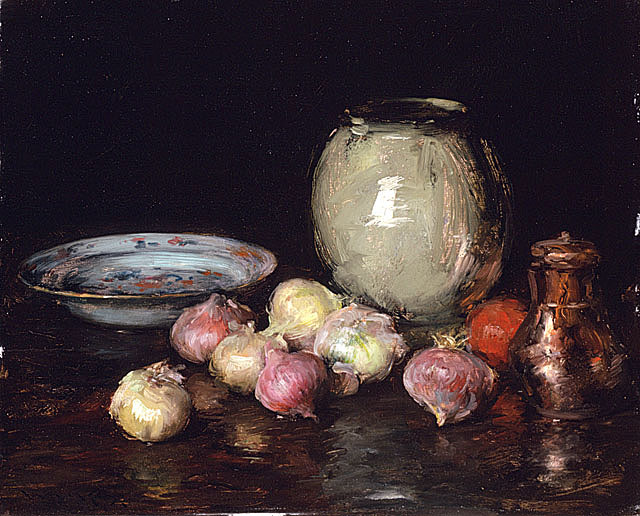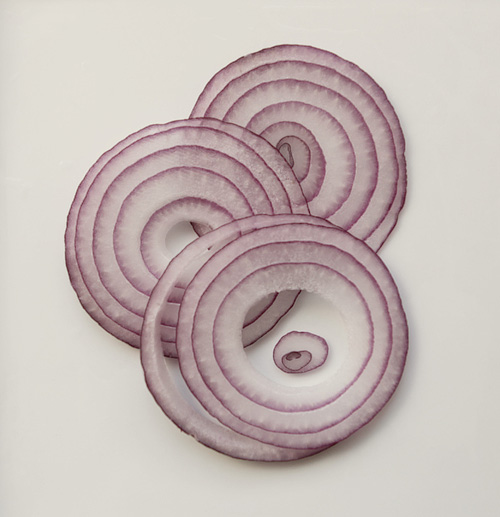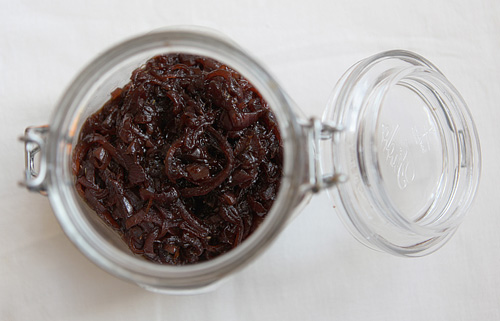
Oil on wood panel, 53.34 x 65.25 cm, Los Angeles County Museum of Art
This is my second post featuring a still life by William Merritt Chase and like the first painting, Still Life with Pepper and Carrot (c.1900), he painted Just Onions (Onions; Still Life ) (1912) on a dark background in a pseudo-impressionist style with close attention paid to variations in tone. Chase applies the same loose brushwork to represent a wide array of tactile textures from the smooth china to the papery skin of the onion. This fairly modern mode of representation was passed on to his students and can be found in the work of Marsden Hartley with his loose blocks of colour and in the emotive qualities of tonal variation by Georgia O’Keeffe.

Traditionally marmalade is made with citrus fruit. In the UK, marmalade is sweet with a bitter tang and is made by boiling citrus peel with water and sugar. The US version is sweet and not bitter. The Romans discovered the preserving process used by the Greeks to set quince fruit in honey. The word marmalade is derived from the French word marmelade which was in turn borrowed from the Portuguese marmelada (marmelada from the root word marmelo meaning “quince”) (2). Modern marmalade was allegedly invented in the 1790s in Scotland when a woman named Janet Keiller sought to find a way to use up a batch of Seville oranges. In Europe by law, only preserves made of citrus fruit may be called marmalade (3) so watch out if you make this in the UK!

Red Onion Marmalade
adapted from How to Cook by Lesley Waters
serves 8
2 TB olive oil
4 red onions, thinly sliced
1 bay leaf
1 tsp dried thyme leaves
1/4 cup brown sugar
3 TB balsamic vinegar
1/3 cup red wine
1/3 cup red wine vinegar
grated zest and juice of one orange
salt and pepper
Heat the oil in a large saucepan and add the onions, bay leaf, and thyme. Season with the salt and pepper and then cover with the lid and cook over a low heat for 30 minutes. Stir occasionally and the onions are done when they are soft and translucent.
Add the sugar, vinegar, red wine, zest, and orange juice. Cook for another 1.5 hours uncovered stirring quite often during the last half hour. Cook until there is no liquid left and the onions are dark with a rich red colour.
Cool the mixture and then transfer to a sterilized jar (a jar that has been put in a saucepan of water, brought to a boil for 10 minutes and drained on paper towels). The marmalade will keep for several weeks in the refrigerator (if it sticks around for that long!).
Delicious when used as a filling for an onion tart with some fresh thyme and goat cheese or as a topping on a hamburger. Also good with cold meats and cheeses.


6 comments
Lorraine @ Not Quite Nigella says:
Jun 30, 2009
Ah the famous red onion marmalade! Thanks for sharing the hard fought and researched recipe :)
Belle@Ooh, Look says:
Jul 1, 2009
Fabulous recipe, and such a history behind it. Fancy it being recorded that Janet Keiller came up with it in 1790 (I#39;m sure she#39;d be surprised).
michaela says:
Jul 1, 2009
i#39;m sure its delicious as a quiche or tart.
Julie says:
Jul 2, 2009
The idea of making marmalade from onions surprised me, but then many of your recipes do.br /I love how you captured the burst of light on the vase just like William Merritt Chase did.
Lucy T. says:
Jul 3, 2009
Thanks so much! Have been looking for something like this. Will most def try the dk brn sugar and sherry vinegar trick too.br /And beautiful, as usual.
Y says:
Jul 4, 2009
Heck yeah! I can just imagine how good this would taste. In my mind, I#39;ve fast forwarded past the 1.5 hours and the onion tart is already in my hand :D